I've got a tree-algorithm and database problem I'd like to have an answer to.
I've got a few areas, let's say 20. Each of these areas have sub-areas ~ 20 each. These parent areas are spread out on a map. Some of these parent areas are close to eachother.
The database looks like this: [area_id, title, parent_id] - Some has multiple children, there's a root node containing all areas. (The Adjacency List Model)
To make this in a picture I could do this:
The different areas as I said, can be close to eachother, (or far away). I'd like someway to tie let's say Area 1 and Area 5 together because I know they're close, and Area 1 is also close to Area 4. Now, here's the problem, let's say that Area 4 is also close to Area 5.
It would look like something like this:
Which makes it an infitite loop? because I want Area 1 to be close to Area 4, but also Area 4 is close to Area 1.
I'd like to do a search, where you can select "search nearby areas", so you select one area then you can search the nearby ones. I could use some tips, on how to solve this with a database and php.
I've been looking around on this forum for help but I don't really know the "name" of this problem, I'd be happy if someone could point me in the right direction or straight up help me out in thist thread.
Thanks guys, and if it's something else you need to know I'll try to answer as soon as possible.